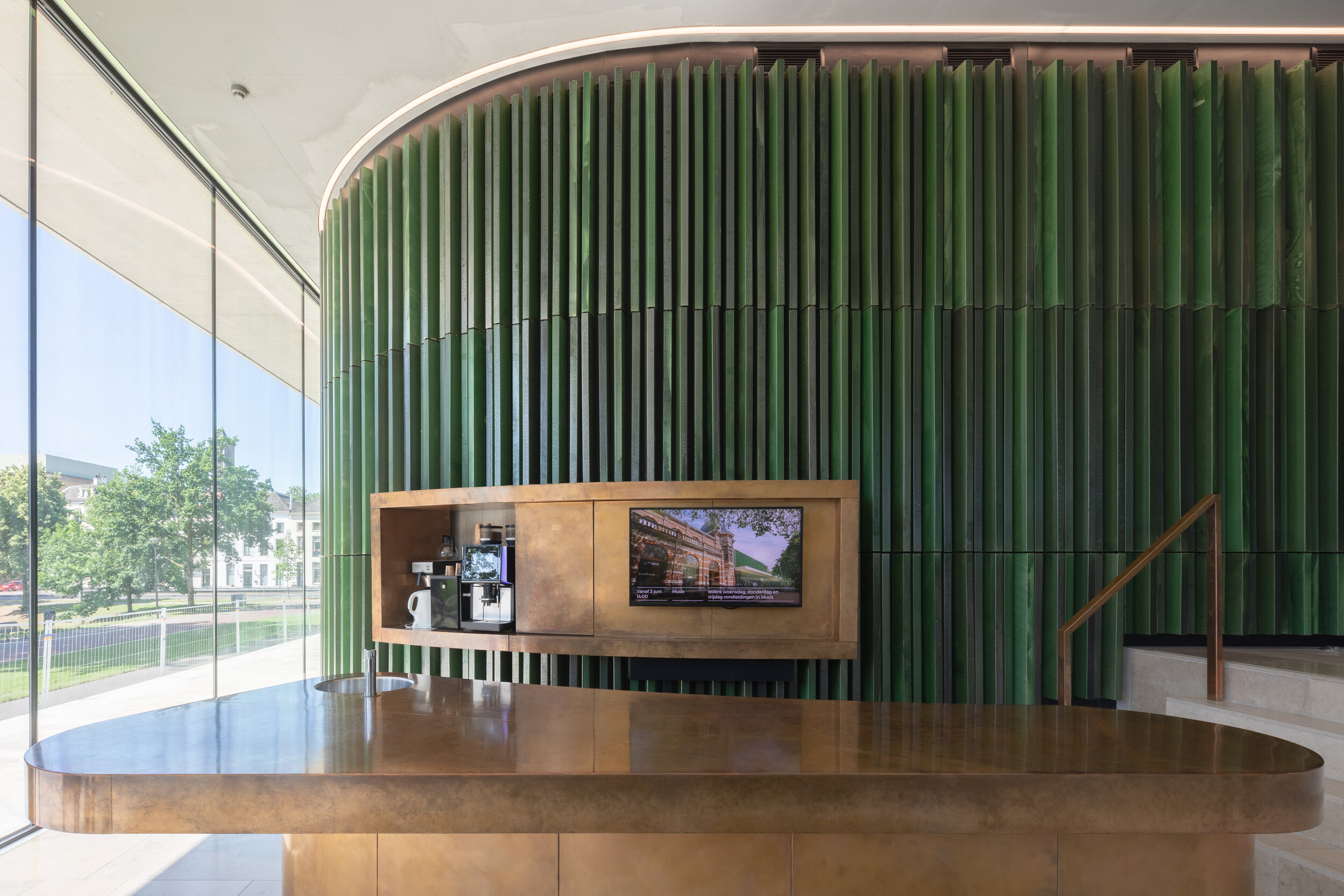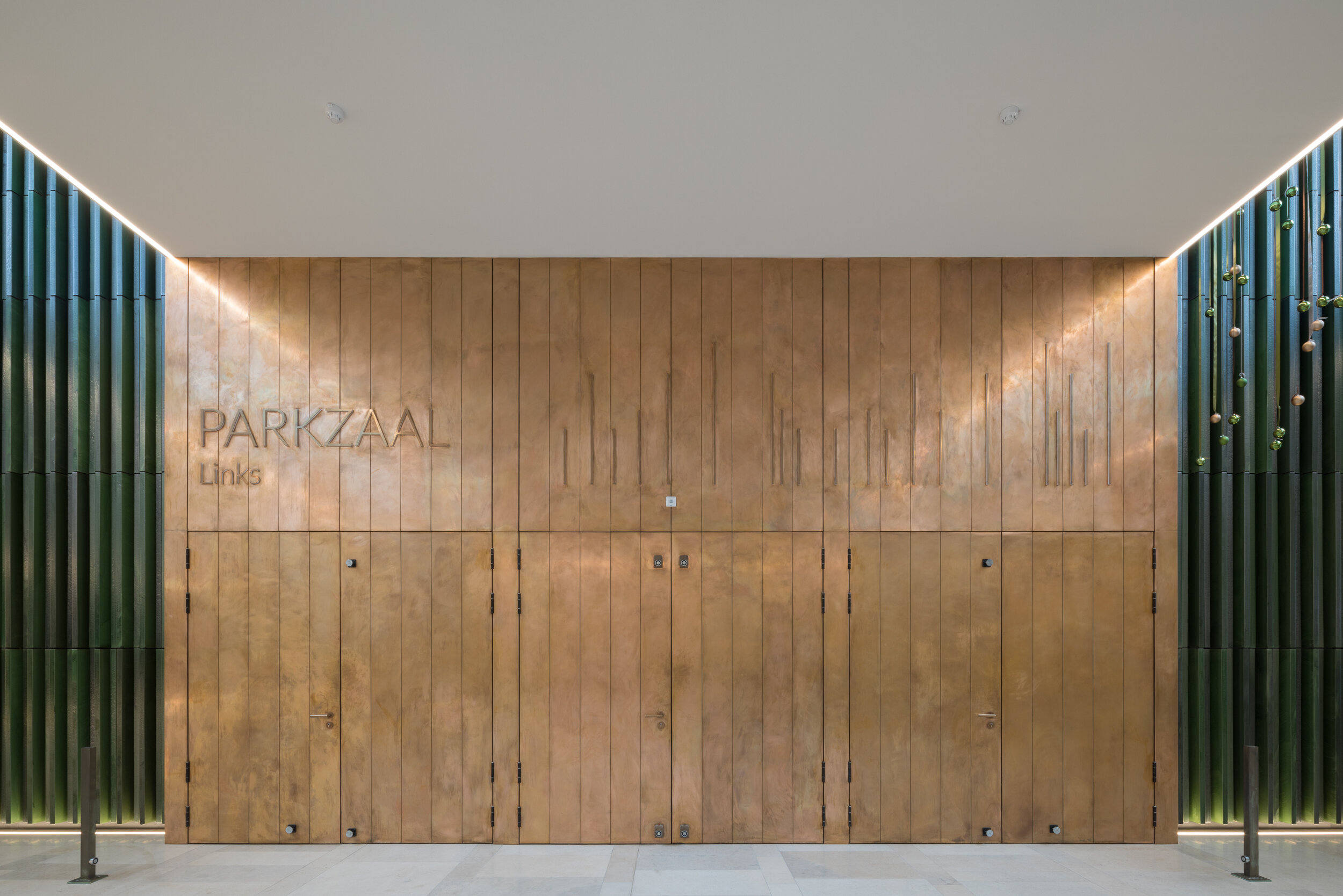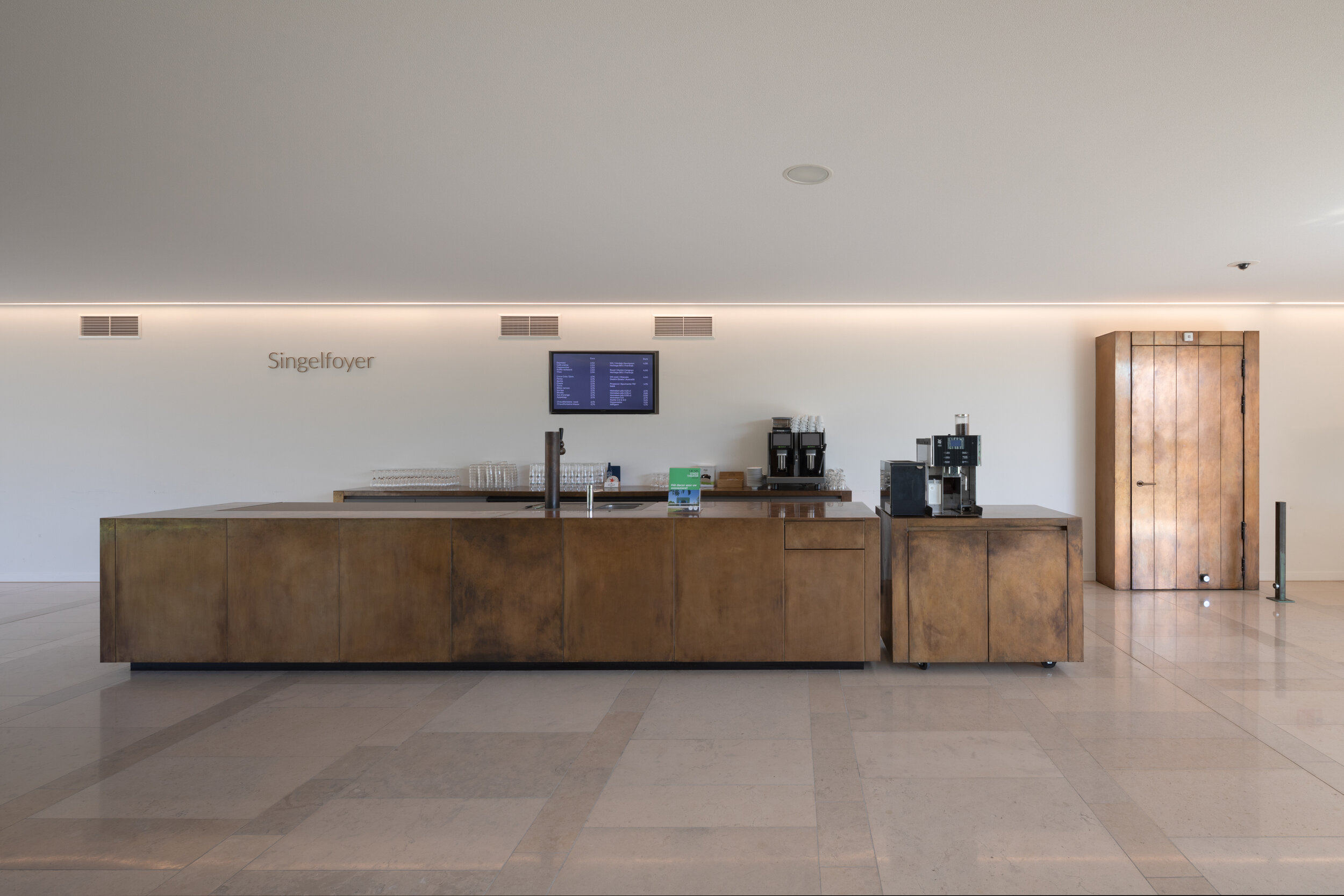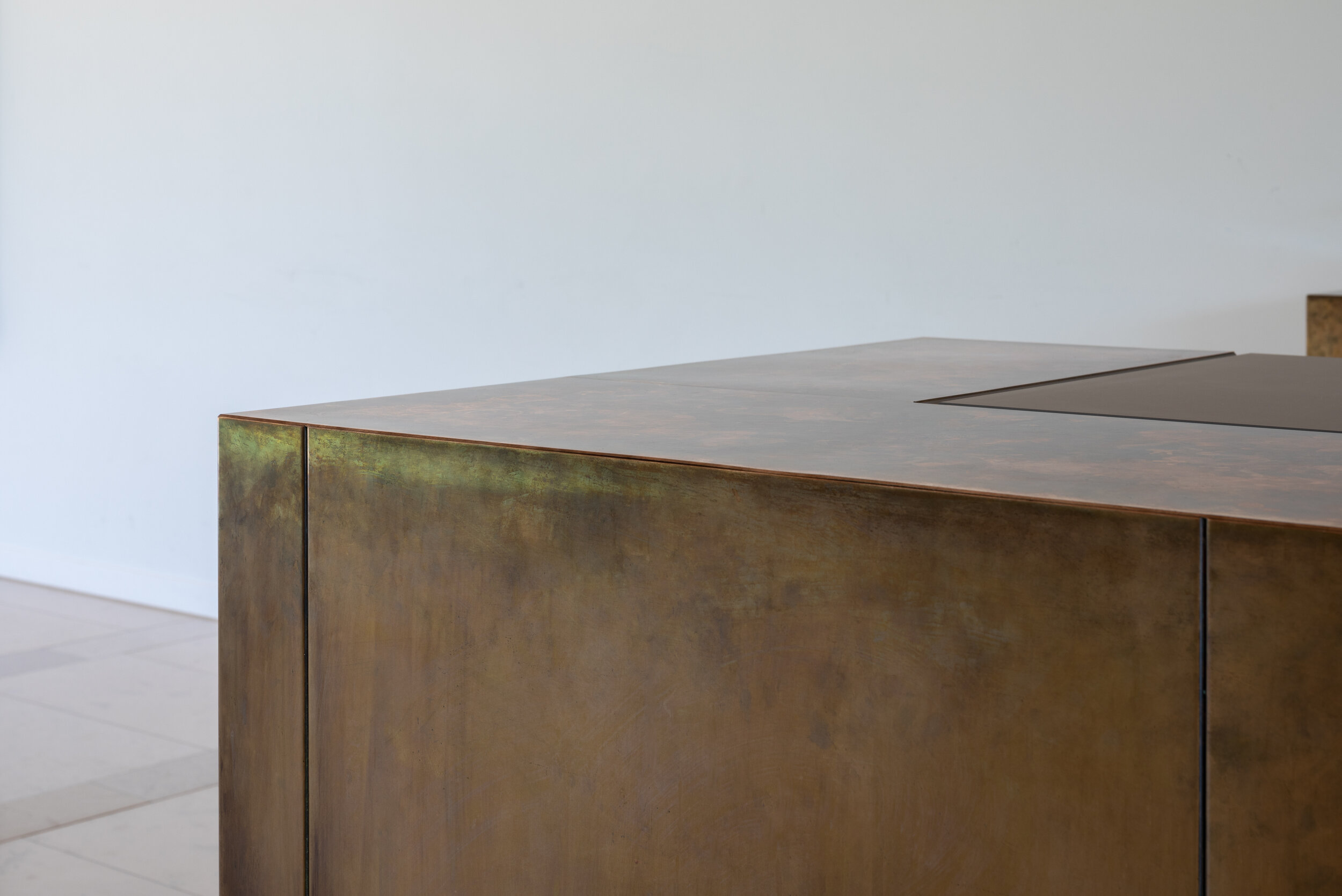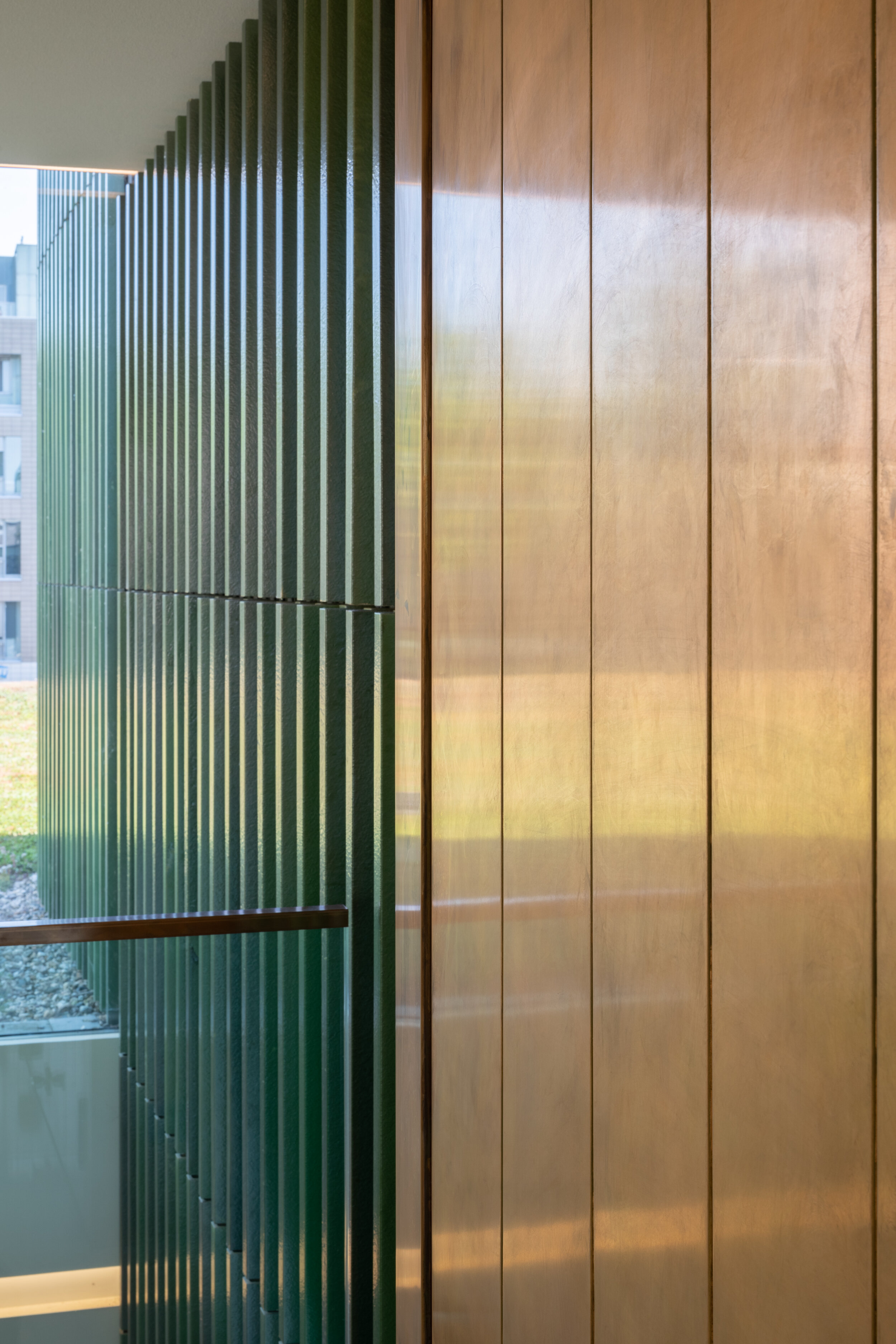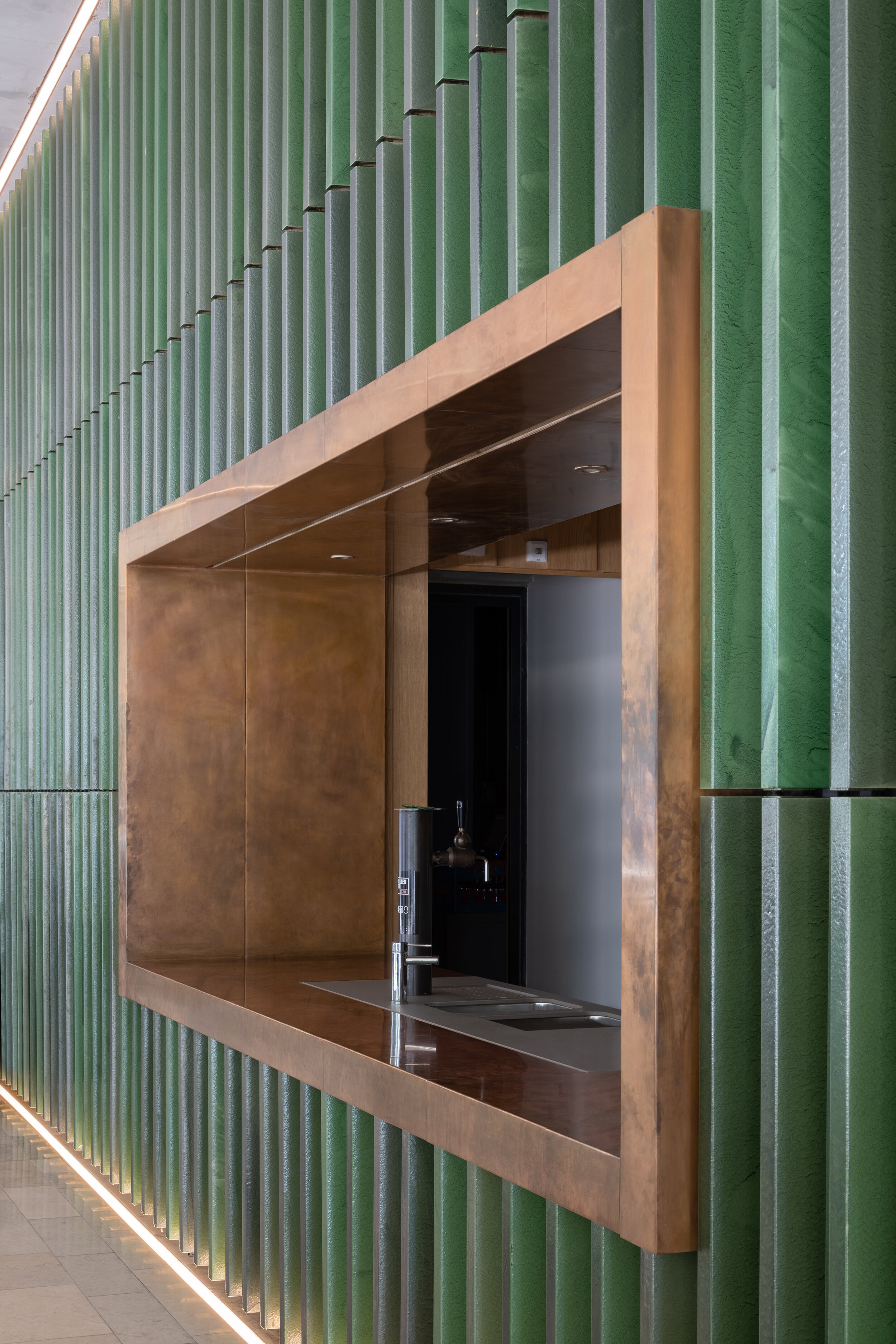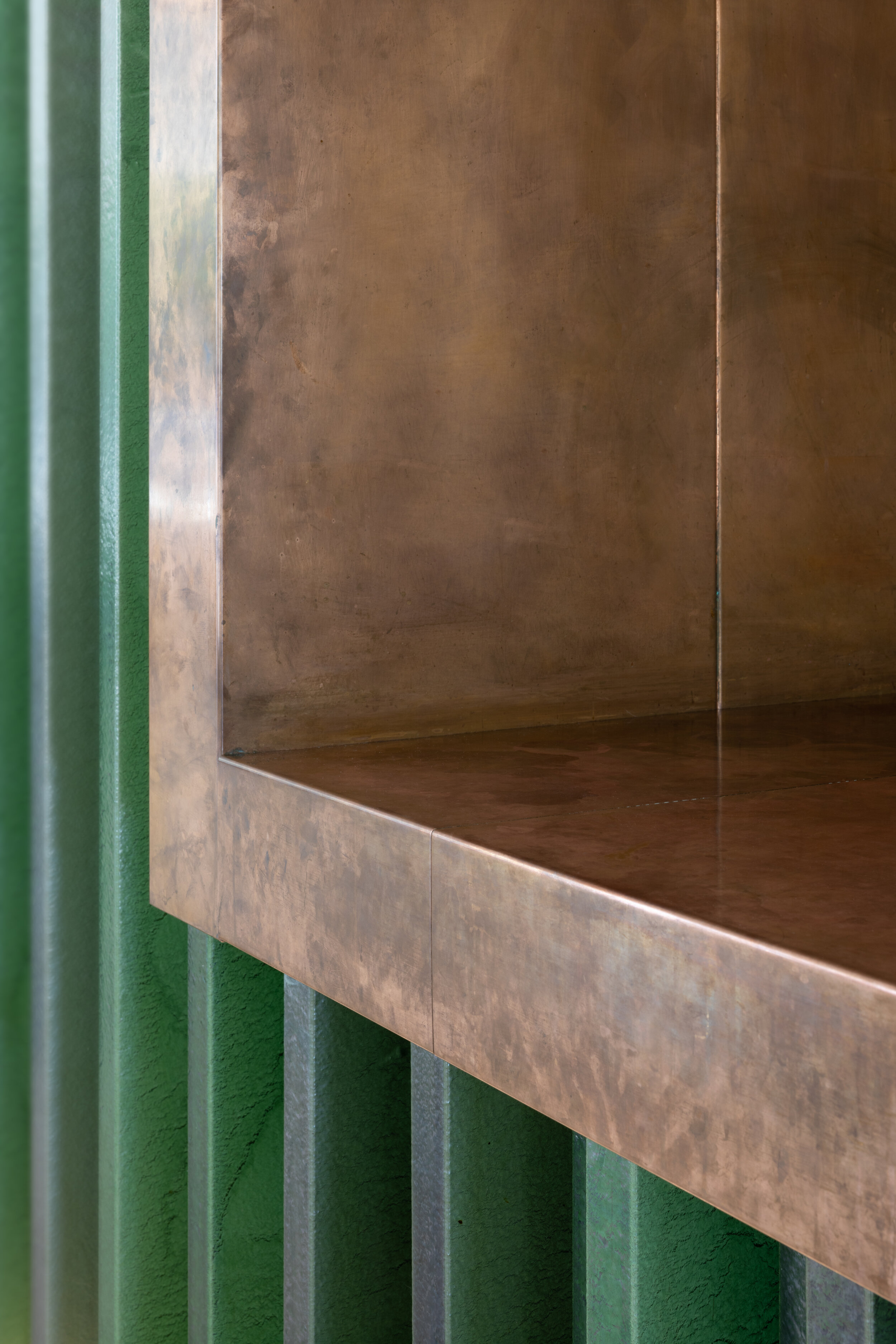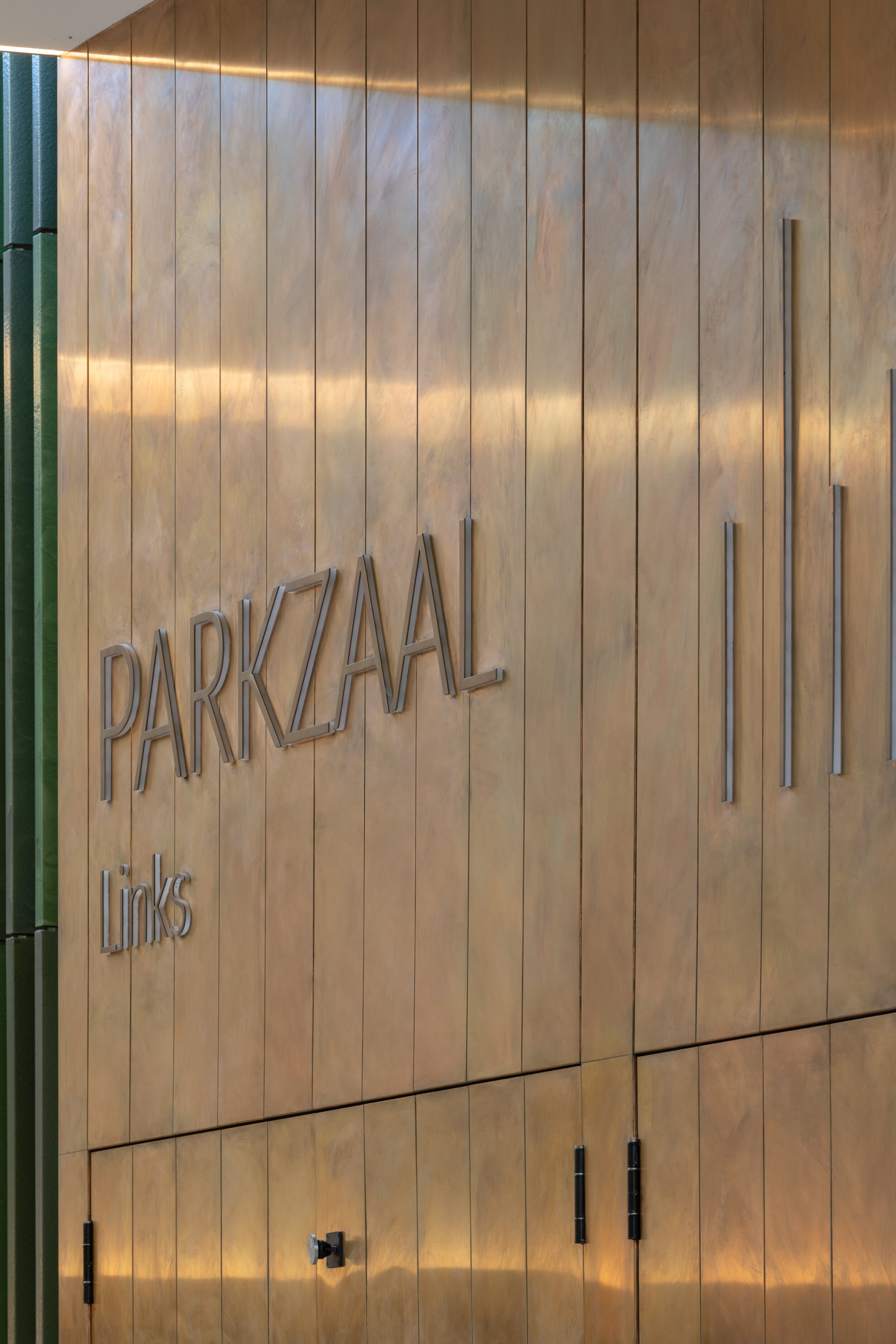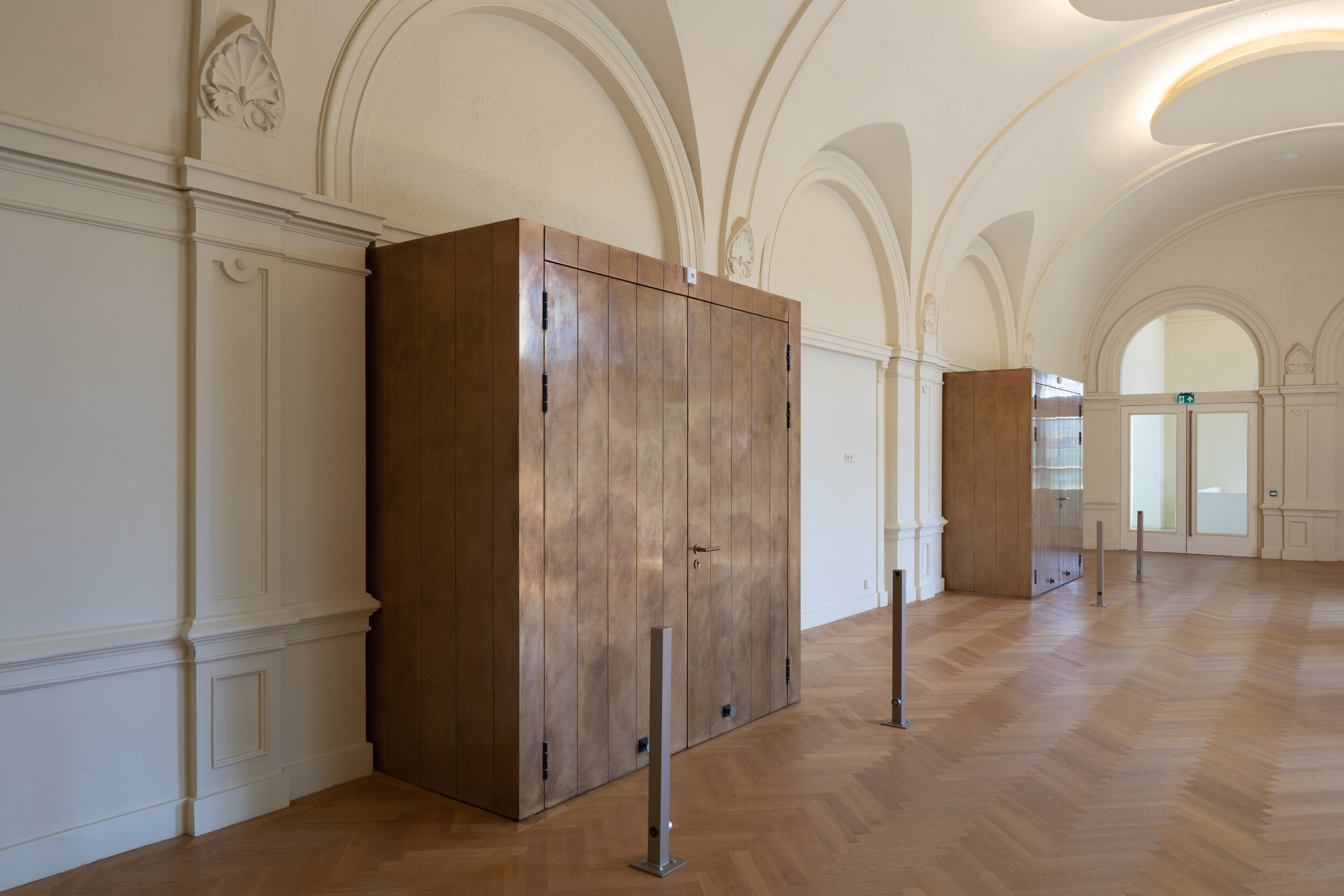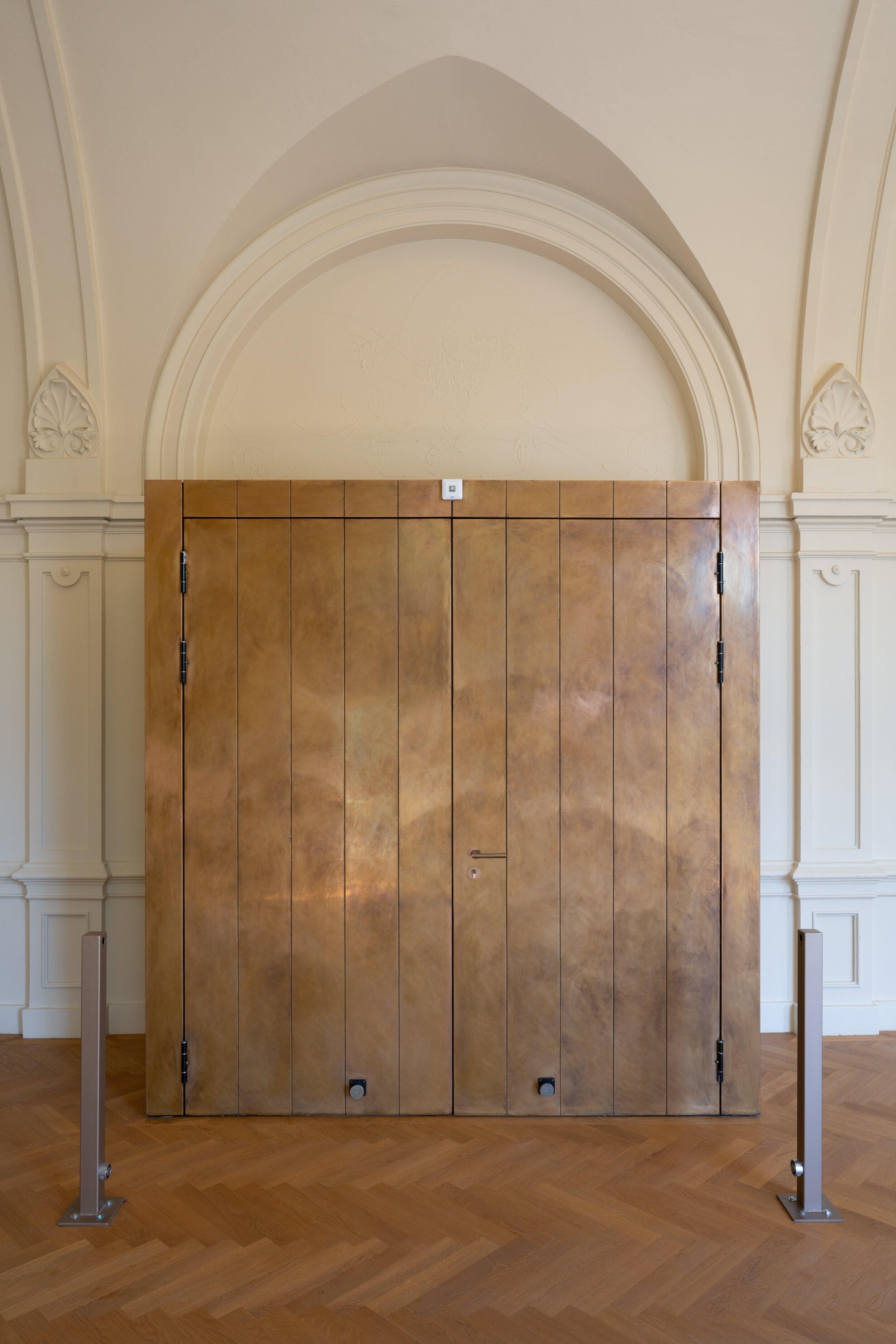Arnhem, NL
Musis Sacrum is a famous concert hall situated in Arnhem and it’s been a part of the city since 1847. The current building did not meet the requirements of this time and therefore the council of Arnhem asked architect firms van Dongen and Koschuch to help with the renovation of the existing monument and a new extension that resulted in a brilliant design of a large concert hall and supportive functions. The design was based on the principles of Musis Sacrum: ‘’to perform and listen to music in excellent acoustical conditions within an attractive green context’’.
A very unique element in this interior design is the use of bronze. Bronze elements such as bars, doors and counters are found in the old renovated building as well as in the new large concert hall. The Nordic Bronze material is specially hand patinated for Musis Sacrum and therefore it fits perfectly in its design.
This project won multiple national and international awards, such as the Heuvelink award and the German Icon award. It became a real success thanks to the team effort between architects Frits van Dongen and Patrick Koschuch, together with an excellent group of consorts, an impassioned client and a great contractor. We asked Ralph van Marmeren, one of the architects that worked on this project, a few questions about the design of this project and in particular the use of the Nordic Bronze sheet material.
Musis Sacrum, old and new building
Interview with Ralph van Mameren, project architect at Koschuch Architects
Can you tell us something about the design, what inspired you?
We were inspired by the beauty of the park and the central position of the concert hall in this stream of parks surrounding the center of Arnhem. Also we wanted to free the original Musis building, the monument, from its add-ons and restore it in its original splendor.
What challenges did you face during this project?
We had 3 major challenges. The first one was time, to make this project possible we were depending on a fund that required us to finish a large part of the building before the end of 2016. This gave us less than a year time from sketch-design to working drawings. Also to ensure the continuity of Musis, one concert hall always needed to be operational. So after the new concert hall could be taken in use, we were able to start the renovation of the old concert hall. Together with a fixed opening date by the queen, our planning was tightly boxed in. The second challenge was that high ambitions and high quality promises were made without a matching budget. All this within a highly political process where the entire town was watching us. The last challenge we faced was a flooding building site and hidden asbestos findings almost necked us.
Which element of this project is the most special for you?
We would say the large openable window to the park. Together with the façade-builder, we managed to invent a new way of opening huge glass doors without huge amounts of steel and matching costs which looks amazing and works perfectly.
Can you tell us something about the process of selecting this particular material (bronze)?
One of the reasons was an art piece that was made out of bronze which had to be incorporated in the design. Another reason was that we wanted to use a material that is aging well and could be used in most building components. Just like in most buildings by Alvar Aalto, which still shine in its elegant beauty after more than half a century.
Which advantages does this material have for this project?
We could use it for our furniture, signage, building details, water tabs, door handles, outside cladding and carpentry and became a very recognizable part of the identity of Musis. Of course its anti-bacterial quality is now a big advantage in these pandemic times.
Bronze elements within Musis Sacrum are mostly applied on doors, bars and counters. Is there a special reason for this?
We wanted to make the doors, bars and counters heavy and classical without a classical shape/detailing. Also the fact that certain parts that are touched a lot will show signs of wear, just like in ancient monuments or on statues, is a nice feature of this material. Furthermore we like the fact that this building is designed to last for a longer period of time and also shows patina on doors and furniture and walking paths on the floors, just like in churches and monuments. This in contrast to the modern trend to treat buildings like temporary fashion-items which are designed to be replaced when its "freshness" wears off.
For this project Architectural Materials Amsterdam provided the Nordic Bronze material. Nordic Bronze is a part of the Nordic Copper collection, available at AMA. Visit our showroom to discover these unique materials.
Photo credit: Bart van Hoek
